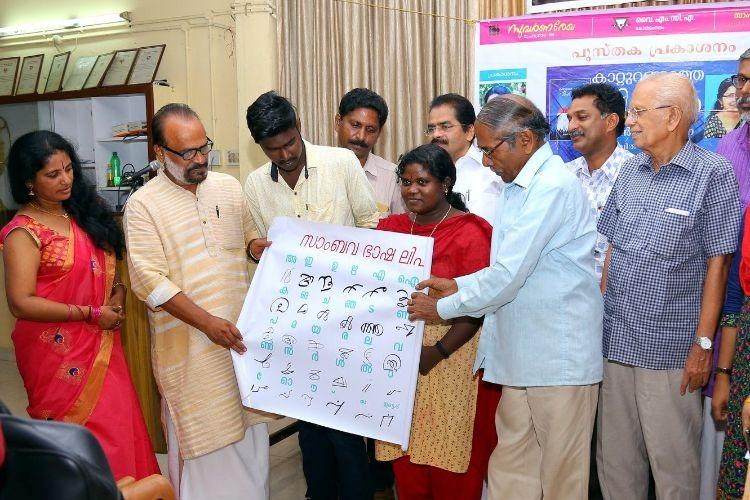It’s not common that the name of a language is so derisive and contemptuous and yet also so widespread that it enters the English language, but such is the case of the word “pariah.”
The word comes from Tamil and Malayalam (in other words, southern Indian) words for “drum” and “drummer,” and was originally applied to the Paraya, a caste who made their living using a drum to announce the king’s messages in public. In Indian society this occupation, and those who practiced it, were considered so low that “pariah” came to mean “outcast.” They were also called Dalits or “untouchables.”
It’s characteristic of a marginalized and scattered people that their language does not have a specific name. In one district within the state of Kerala the Parayas’ language is known as Pāluvan Bhasha, in another, Parappecc, in others Porul Bhasha, and Sambava.
The language has often been called “secret,” a somewhat misleading term. It’s certainly true that the Paraya tend not to speak their language in public or to outsiders, but conversely, those of higher castes would consider their language less than unimportant. When a society consists of winners and losers, the losers are almost invisible to the winners.
“For other castes,” writes one researcher, “the Paraya language remains unfathomable.”
Not surprisingly, this distaste has spread to academia: “It has never become a serious subject of academic enquiry, and nor has it become a subject of intellectual reflection in social science research that grapples with the history of the Parayas in Kerala.”
Under the circumstances, it is remarkable that someone should create a script for the language, and even more remarkable that its author should receive a national award.
Yet in 2018, according to The News Minute, a digital news platform reporting and writing on issues in India, with a specific focus on the 5 southern states, a 17-year-old named A.P. Akash collaborated with Swamini Sivanandan, a budding poet from the Sambava community and a local teacher, to create a Dalit/Sambava/Paraya script. The 25-letter alphabet was approved by the Bharatiya Dalit Sahitya Akademi, which also awarded the teenager the Bharatiya Dalit Akademi Youth Icon award, presented in New Delhi.
“Sambava…is the pride of our community,” Swamini Sivanandan asserts in the News Minute story. “Earlier people were hesitant to speak the language openly. This was a means to communicate secrets and has its roots in the times when untouchability prevailed in society.”
Perhaps 700,000 Dalits live in Kerala, but the Sambava language is reportedly not widely used. “The social oppression and ostracism faced by many Dalits made them embrace Christianity in the late 1800s and early 1900s, and their cultural roots took a blow.”
Clearly, this oppression still exists. “Some rightist goons had tried to hamper my efforts when they learnt that I was helping to develop a script for Sambava,” she claims, adding that it shows how insecure the so-called elites are in the proclamation of pride by Dalits. “The language is the tongue of the downtrodden and it should be given a new vibrant face, bringing it to the mainstream.
Several writers, especially those from Dalit society, are excited about the development of the Sambava script. Writer and Dalit critic Sunny M Kapicad said, “The language was being used as a medium of secret communication inside the community. It is a big leap if its alphabet could be developed, because it is getting its written identity.”
Akash himself explained that most of the community members across the state, especially the current generation, are ignorant of this language. “My mission is to revive the language within our community as a token of Dalit pride,” he declared.
Son of Shalajan, a construction worker, and Bindu, a plantation worker, he does some part-time photography to fund his studies and to support his family. “I will pursue my studies and now I have a bigger dream to give my language the status it is worthy of.”

10.1632° N, 76.6413° E
4/3/6